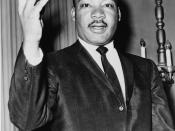Skin tone and a personÃÂs weight have historically played a part in determining the social status of people of colour. Through generations of being thought of as lesser beings, many dark-skinned women began to develop a sense of self hatred. An example of color prejudice was in the 1950ÃÂs when blacks were first allowed to live in Liberty City, Florida. Whites began fearing a black invasion and went so far as to build a wall that separated the whites and blacks from each other. Only fair-skinned blacks or blacks with a skin complexion brighter than a brown paper bag were allowed to work in prestigious places such as a bank, for it was thought that a dark skinned person was too ignorant to work in a white collar environment. Also, people with straight or ÃÂgoodÃÂ hair have been seen as more attractive than those with nappy or ÃÂbadÃÂ hair.
Equally important, women with slender physiques were seen as more desirable to have than thickly shaped women. Such treatment began to make women intentionally seek impregnation by white men in hope that their children would be born with lighter complexions and thus benefit more in life. Perpetuating this issue, women have a standard of European beauty and the media for centuries has been milking this perception of beauty for all its worth while hardly ever broadcasting any other type.
When one thinks of models, what colour and race are they? When a teenager looks in a magazine what colour and race are the models in the ads? In VogueÃÂs magazines, the models are mostly women with European features. If there are ethnic female models in these magazines they are either something like an accessory or are selling something to women and are very few in number. In popular culture today,


